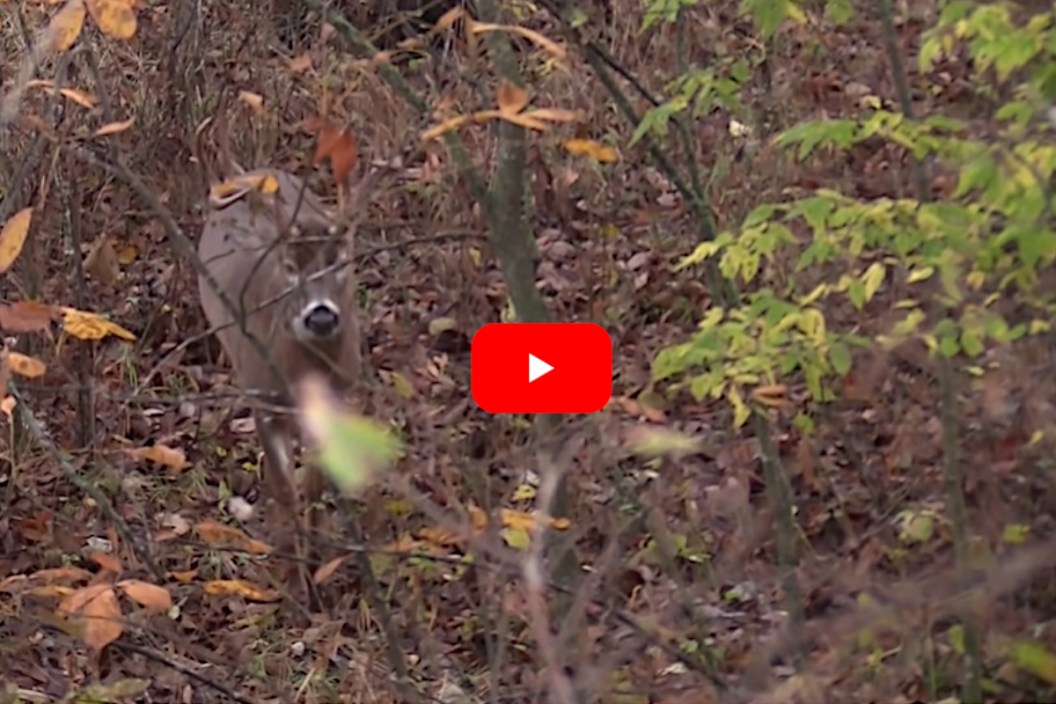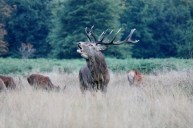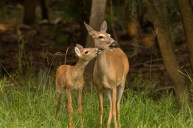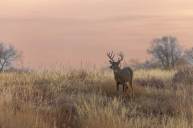Most hunters are familiar with the basic whitetail deer communication sounds, such as the basic grunt, the tending buck grunt, the social and estrous bleat, the snort wheeze, and, of course, that shrill, annoying alert sound does make when they bust you. However, even if deer hunters can recognize one version of each vocalization, they actually vary quite a bit more than anyone realizes. But hunters rarely hear them, as they're rather subtle for humans to detect. For example, the buck growl or roar, which bucks produce when they're riding high on testosterone while prowling for estrus does. A series of short grunts typically prefaces this sound, which can become guttural and downright creepy.
In the video below, you can one of these sequences for yourself, as a mature buck at the peak of the rut gives a group of hunters a show. Make sure to turn up the volume to hear for yourself!
That buck's charge accompanied with the roar was creepy enough to startle someone. One of the rarer sounds you'll hear from a buck, the growl or roar was unknown by most deer hunting enthusiasts until just a few years ago. It's seemingly more common in areas where the buck-to-doe ratio is more even, as there's more competition for breeding rights. While we don't know exactly what the big buck is saying to other deer with this call, most believe it's either a sign of frustration or excitement for a hot doe because the sound is so much more aggressive than normal grunting.
Since the growl has come to be more well-known, many game call companies are starting to capitalize on it by marketing grunt calls that can reproduce the noise. Some of the more popular options right now include the Flambeau Mad Buck Growl call and the Primos Buck Roar. This would be a great call to try with a rattling sequence and attractant scents if rutting activity is especially tense in your hunting spot.
For more outdoor content from Travis Smola, be sure to follow him on Twitter and check out his Geocaching and Outdoors with Travis YouTube channels.
READ MORE: DEER SOUNDS: MAKING SENSE OF THE NOISES YOU HEAR IN THE DEER WOODS




